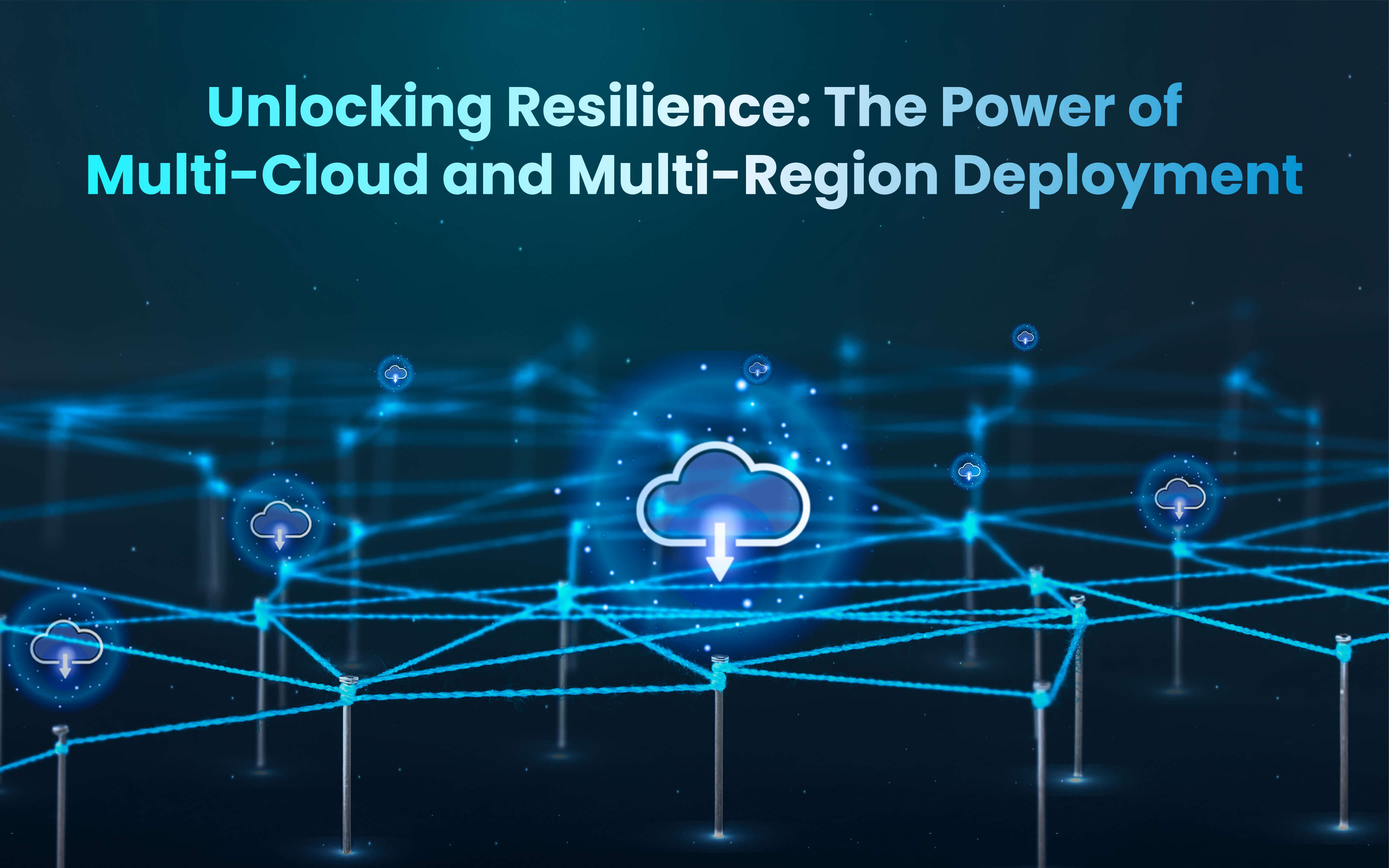Blogs
To know about all things Digitisation and Innovation read our blogs here.
DevOps
The Power Duo: Why SRE and DevOps Are Essential for Modern Platform Engineering?
SID Global Solutions
12 June 2023

Introduction:
In today’s digital landscape, platform engineering plays a critical role in delivering reliable, scalable, and efficient systems. Site Reliability Engineering (SRE) and DevOps are two disciplines that have emerged as indispensable for achieving these goals. While SRE focuses on enhancing reliability and resilience, DevOps aims to accelerate development and deployment processes. This guide explores the synergistic relationship between SRE and DevOps and highlights why their collaboration is vital for modern platform engineering success.
Also Read: From Reactive to Proactive: How Scalable Monitoring Enhances Incident Response
Understanding SRE: Enhancing Reliability and Resilience
Definition and Key Principles: SRE is an approach that combines software engineering and operations to ensure the reliable performance of complex systems. Its core principles include a focus on reliability, scalability, and efficiency. SRE teams work proactively to prevent incidents, manage resources effectively, and maintain high service availability.
Key SRE Practices:
- Service Level Objectives (SLOs) and Error Budgets: SLOs define the desired level of service reliability and performance. They enable SRE teams to measure and monitor system behavior against predetermined targets. Error budgets, on the other hand, allow for a trade-off between innovation and stability. They provide a quantifiable limit on acceptable service disruptions, giving teams the freedom to introduce changes and experiment within defined boundaries.
- Incident Management and Postmortems: Incidents are unavoidable in any system, and SRE teams focus on effective incident management to minimize their impact. This involves timely detection, quick resolution, and thorough analysis of incidents. Postmortems play a crucial role in this process, allowing teams to learn from failures, identify root causes, and implement preventive measures to avoid similar incidents in the future.
- Capacity Planning and Performance Optimization: SRE teams employ capacity planning strategies to ensure systems can handle expected and unexpected traffic loads. By analyzing historical data and forecasting future demands, they allocate resources optimally and avoid performance bottlenecks. Performance optimization involves techniques such as load testing, resource monitoring, and tuning system configurations to deliver optimal user experiences.
- Change Management and Release Engineering: SRE teams collaborate closely with development teams to manage changes and releases effectively. By implementing robust change management processes, they minimize the risk of disruptions caused by deployments. Automated release engineering practices, such as canary releases or blue-green deployments, enable controlled rollouts and quick rollbacks, ensuring smooth transitions without impacting users.
Also Read: Unlocking Resilience: The Power of Multi-Cloud and Multi-Region Deployment
Decoding DevOps: Accelerating Development and Deployment
Definition and Core Values: DevOps is a cultural and technical movement that emphasizes collaboration, communication, and automation among development, operations, and other relevant teams. It aims to break down silos, streamline processes, and foster a shared responsibility for delivering high-quality software efficiently.
Essential DevOps Practices:
- Continuous Integration and Continuous Delivery (CI/CD): CI/CD pipelines automate the process of integrating code changes, running tests, and deploying software. By continuously integrating code changes, teams can catch integration issues early and ensure a stable codebase. Continuous delivery enables frequent and reliable software releases, reducing the time-to-market and enabling rapid iteration.
- Infrastructure as Code (IaC): Infrastructure as Code is an approach that treats infrastructure provisioning as code, allowing it to be versioned, tested, and deployed alongside application code. By defining infrastructure configurations using declarative code, teams can automate the provisioning and management of infrastructure, ensuring consistency and scalability across environments.
- Configuration Management and Orchestration: Configuration management tools enable teams to manage and automate system configurations, ensuring consistency and reproducibility. These tools help maintain desired states, apply configuration changes at scale, and recover quickly from failures. Orchestration tools, on the other hand, coordinate complex, distributed systems, managing the deployment and lifecycle of interconnected components.
- Monitoring and Observability: Monitoring and observability provide insights into system behavior, performance, and user experience. By collecting metrics, logs, and traces, DevOps teams gain visibility into application and infrastructure health. Real-time monitoring, alerting, and dashboards allow teams to detect anomalies, diagnose issues promptly, and ensure systems meet performance expectations.
Also Read: Digital Engineering: A Strategic Imperative for Businesses in the Digital Age
The Synergy between SRE and DevOps: Achieving Platform Excellence
Common Goals and Shared Responsibilities: SRE and DevOps share common goals: building reliable, scalable, and efficient systems. While SRE focuses on ensuring system resilience and availability, DevOps aims to accelerate the delivery of high-quality software. Both disciplines recognize the importance of collaboration, communication, and automation to achieve these goals.
Collaboration and Communication:
- Cross-Functional Teams and Blurring the Lines: Organizations benefit from cross-functional teams that comprise SRE and DevOps professionals working closely together. This structure fosters collaboration, promotes knowledge sharing, and breaks down traditional silos. By blurring the lines between roles, teams can leverage diverse expertise, perspectives, and experiences to make more informed decisions.
- Collaborative Incident Response: SRE and DevOps teams collaborate during incident response, combining their skills and knowledge to resolve issues quickly and effectively. They establish communication channels, incident response playbooks, and shared incident management tools to ensure coordinated efforts. Collaborative incident response strengthens the feedback loop between development and operations, driving improvements and preventing future incidents.
Automation and Tooling:
- Leveraging Automation for Efficiency: Both SRE and DevOps rely heavily on automation to streamline repetitive tasks, reduce manual effort, and minimize human error. Automation tools help with provisioning infrastructure, configuring systems, deploying applications, and managing operational tasks. By automating routine operations, teams can focus on higher-value activities, such as problem-solving, innovation, and enhancing user experiences.
- Shared Tooling and Infrastructure: SRE and DevOps teams often utilize shared tools and infrastructure to maximize collaboration and leverage each other’s expertise. Collaboration platforms, version control systems, incident management tools, and observability platforms are examples of shared tools. Shared infrastructure, such as container orchestration platforms or cloud services, allows teams to manage systems collectively and benefit from economies of scale.
Continuous Improvement and Learning:
- Feedback Loops and Iterative Improvements: Both SRE and DevOps emphasize the importance of feedback loops and iterative improvements. Feedback from monitoring systems, incident response, and user experiences drives continuous learning and refinement of processes and systems. Teams collect data, analyze trends, and make data-driven decisions to address bottlenecks, optimize performance, and enhance reliability.
- Knowledge Sharing and Postmortems: Knowledge sharing is crucial in SRE and DevOps cultures. Postmortems, or blameless retrospectives, allow teams to reflect on incidents, understand root causes, and implement preventive measures. Through postmortems, teams share insights, learn from failures, and disseminate best practices across the organization. This iterative learning process contributes to improving system resilience and building a culture of continuous improvement.
Also Read: Best Practices for Successfully Implementing Microservices in Your Organization
The collaboration between SRE and DevOps is crucial for modern platform engineering success. By combining the focus on reliability and resilience from SRE with the acceleration of development and deployment from DevOps, organizations can build robust, scalable, and efficient systems. Through shared goals, collaboration, automation, and continuous improvement, the power duo of SRE and DevOps enables organizations to meet the demands of the modern digital landscape and deliver exceptional user experiences.









